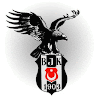The company traces its roots to the Swallow Sidecar Company, founded in 1922 by Bill Lyons and William Walmsley. Based in Blackpool, England, the company produced a popular line of aluminum motorcycle sidecars. Swallow eventually switched its focus to automobile production, changing its name to SS Cars Ltd. in 1933. The first vehicle to carry the Jaguar name was the SS Jaguar 100, released in 1935.
After World War II, SS Cars switched its moniker to Jaguar so as not to be associated with the Nazi paramilitary organization that bore the same initials. Its first postwar offering was 1948's Mark V. The luxury sedan was joined that year by the XK 120, a sports car that was the fastest production automobile of its day — its name was derived from its top speed. The XK 120 proved quite popular, and helped Jaguar establish a strong presence in the sports car market.
By the 1950s, Jaguar had begun exporting luxury vehicles to the United States. Created just for the American market, the Mark VII Saloon was introduced in 1951; Jaguar quickly realized it had a hit on its hands. In 1956, the car took the prize at the Monte Carlo Rally. Later in the decade, Jaguar added the Mark VIII and Mark IX to its lineup.
The 1960s saw the launch of one of Jaguar's most well-known models. The E-type coupe, or XK-E as it was known in the U.S., blended performance and refinement, wrapped in a sexy package. The success of groups like the Beatles and the Rolling Stones and icons like Twiggy, the fashion model, made British culture a hot commodity during the '60s — a fact that had positive implications for Jaguar's popularity in the U.S.
A decade later, Jaguar introduced the XJ6C and XJ12C coupes, as well as the XJ-S. A new V12 was put in the XJ12, making it the fastest production sedan of its day. The 1980s saw Jaguar continuing to raise the bar in performance with the launch of the XJ-S HE and a true world supercar, the XJ220. By this time, however, Jaguar also faced increased competition from German automakers and adverse exchange rates. The company's managers decided to recognize the potential value of a partnership with another company. This decision ultimately led to a full buyout of Jaguar by Ford in 1990.
Ford's influence (and financial support) was evident with the 1997 launch of Jaguar's XK8 and supercharged XKR sports cars. Powering both was Jaguar's new AJ-V8, a compact yet powerful engine that was also used in certain Land Rover vehicles. A few years later, Jaguar made an effort to broaden its product line with the introduction of a lower-priced, entry-luxury vehicle known as the X-Type. Unfortunately, this model sold poorly, as its modest Ford sedan underpinnings proved to be a liability. Around this time, Jaguar's old-school traditional styling also grew stale as competitors moved into the new millennium with cutting-edge, modern designs inside and out.
Sales plummeted, and Jaguar's financial problems caused further headaches for parent company Ford who was also in the throws of financial turmoil. In order to cut its losses and raise cash, the Blue Oval sold Jaguar and fellow British premium brand Land Rover to Indian manufacturer Tata in 2008. Only time will tell if Indian management can turn things around, but new models like the XK and XF show positive signs of progress as they feature modern designs sprinkled with a fair share of classic Britannic charm.
Source: http://www.edmunds.com/














0 yorum:
Post a Comment